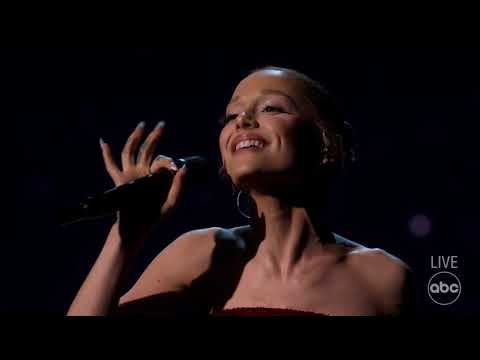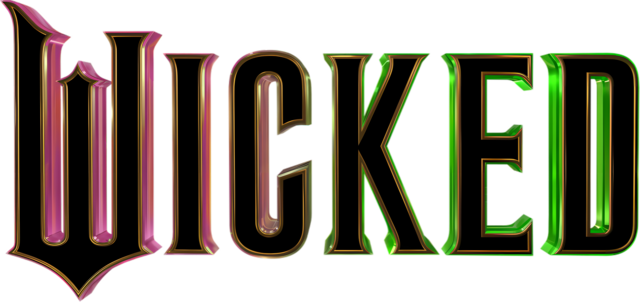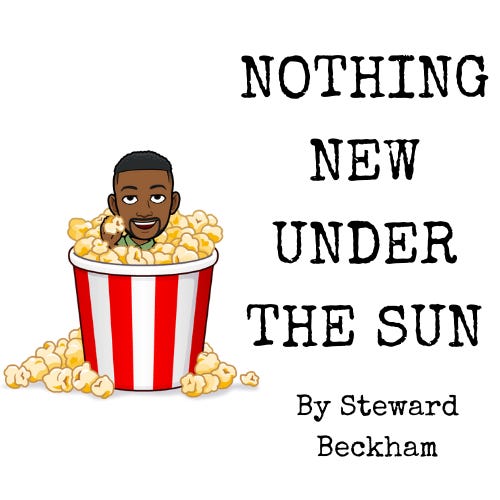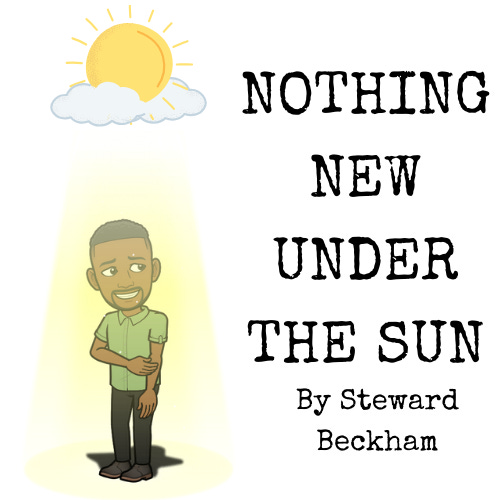Programming Note: This post was originally intended for Friday, but I hope it offers a meaningful start to your week. Going forward, Screen Musings will appear on Saturdays rather than Fridays. While Friday movie nights shaped how I first fell in love with film, moving the series allows for a more balanced rhythm — and Saturdays feel like a natural moment to reflect on the simple pleasure of movies.
A Wicked Rekindling
Upon rewatching Wicked with my partner, I reflected on the film’s beauty and the more profound cultural lineage it draws from. Specific eras in American popular culture functioned like national campfires — shared experiences that gave people a sense of unity, identity, and imagination. Wicked, the origin story of the Wicked Witch of the West, is a contemporary reimagining of one of those moments: The Wizard of Oz, a 1939 Technicolor fantasy born of Depression-era escapism. But in remixing this classic, Wicked reflects something different — a society no longer gathered around the same fire.
Wicked (2024), based on the 2001 Broadway play, is a post-9/11 remix of early 20th-century fantasy. It introduces Elphaba, a misunderstood student marginalized for her green skin, and charts her unlikely friendship with the popular and superficial Galinda. Their paths diverge when Elphaba uncovers the dark underpinnings of the Emerald City’s political system, encountering surveillance, scapegoating, and the moral hollowness of binary narratives like good and evil. The film updates a 1930s property with modern sensibilities and a Department of Homeland Security-era skepticism of power. In this modern rendition, a national campfire is remembered.
The Three National Campfires
The widespread access to mass-produced American popular culture in the 20th century was one of the defining features of the so-called American century. Cultural icons became accessible thanks to the rise of sound film, television, music distribution, and growing economic prosperity. These decades laid the foundation for American mythmaking and reflected a kind of cultural navel-gazing and self-satisfaction. Today, that cultural dominance dissolves into a global marketplace of ideas and identities. The old American campfires still flicker, but now they are being remixed, reframed, and reinterpreted by a fragmented, borderless audience.
The First National Campfire
The 1930s were a globally connected era, shaped by a shared experience of economic despair. The Great Depression cratered film industries worldwide, especially in Europe, where the lingering costs of World War I and the rise of fascist regimes restricted cultural output. As authoritarian governments demanded ideological conformity, many artists and intellectuals fled to the United States. Hollywood gained momentum, buoyed by the innovation of sound films and an influx of global talent seeking creative freedom.
Into this environment came The Wizard of Oz (1939), a Technicolor marvel that catered to a generation of children and families yearning for hope, stability, and wonder. It followed Dorothy, a girl from Kansas — the symbolic heartland of a shaken nation — as she navigated a fantastical world, only to discover that what she longed for was already within her. Its themes mirrored the emotional undercurrents of the time: confusion, longing, and a desire for belonging. Its closing line, “There’s no place like home,” echoed a cultural mood both government and business encouraged, promoting unity and vigilance as storm clouds gathered across both oceans.
The Wizard of Oz combined visual spectacle with emotional resonance, showcasing the narrative and technical supremacy that would define Hollywood. It remains an enduring emblem of the first American cultural campfire: a story that offered escape, reassurance, and mythic cohesion.
The Second National Campfire
The 1960s saw the campfire rekindled, this time with stories that questioned the myths of the past. American culture became more introspective, global, and less beholden to sanitized, advertiser-driven narratives. Nowhere is this shift more evident than in the evolution of the Western.
Westerns — especially those directed by John Ford — had mythologized the frontier in earlier decades. Films like Stagecoach (1939), My Darling Clementine (1946), and The Searchers (1956) celebrated rugged individualism, conquest, and American exceptionalism. But by the early 1960s, Ford’s The Man Who Shot Liberty Valance (1962) confronted those myths directly, telling the story of a legend built on a lie. It was a film about mythmaking's cost and selective memory's political convenience.
International filmmakers soon joined in this reimagining. Sergio Leone, a devoted admirer of Ford, reinvented the genre with his "spaghetti Westerns" like A Fistful of Dollars (1964) and The Good, the Bad and the Ugly (1966). These films infused the American Western with European existentialism, brutal realism, and stylistic experimentation. The cowboy was no longer a savior but a symbol of dislocation, ambiguity, and decline.
By 1972, Buck and the Preacher, co-directed by and starring Sidney Poitier, expanded the genre further. It brought Black protagonists into the Western mythos, highlighting the complexities of freedom, race, and the long shadow of slavery. The Western, once a whitewashed arena of American virtue, became a canvas for reckoning with exclusion, violence, and identity.
In this sense, the Western became a cinematic mirror for the shifting cultural landscape of the 1960s. America’s self-image was beginning to globalize. Its stories could now be borrowed, critiqued, and reframed by outsiders. In the 1930s, American cinema dreamed of home. By the 1960s, it began to dream of the world and grapple with how global audiences saw the nation’s hopes and hypocrisies.
The Third National Campfire
The 1980s rekindled the national campfire one last time. It was an era of cultural consolidation and spectacle, when American media still held collective sway, even as it began to fragment under the pressure of cable television and global markets.
This was the last period when Americans, across class and region, tuned mainly into the same shows and films. The rise of the blockbuster, pioneered by directors like Steven Spielberg and George Lucas, merged the grand scale of old Hollywood with the technological innovation and auteur sensibilities of New Hollywood. Films like The Empire Strikes Back (1980) and Raiders of the Lost Ark (1981) were entertainment and shared cultural events.
Meanwhile, directors like Martin Scorsese and Spike Lee explored more intimate, racially and emotionally complex stories with films like Raging Bull (1980), The King of Comedy (1982), She’s Gotta Have It (1986), and Do the Right Thing (1989). These films pushed American cinema to reckon with identity, loneliness, and systemic injustice. At the same time, the dominant blockbuster machine reassured audiences with grand narratives, clear moral arcs — and plenty of toys to buy.
The 1980s were also the apex of American soft power. Under Reagan, the cultural mood favored nostalgia, consumption, and a sanitized reinvention of postwar myths. Marginalized communities were acknowledged, but often tokenized. Still, the sheer force of the American cultural apparatus made this campfire burn brightly — even as it masked deeper divisions.
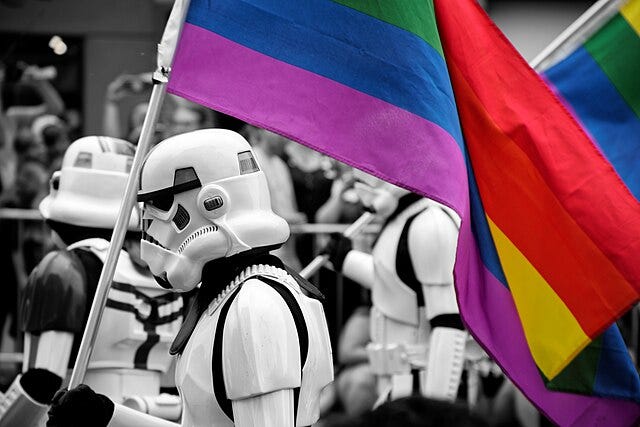
Today
There have been efforts to rekindle a national campfire in recent years, but in an age of social media, streaming platforms, and algorithm-driven content silos, it is increasingly difficult. The dream of a shared American story is regularly contested, often reduced to debates over authenticity, inclusion, and cultural ownership. Disney casting choices, Academy Award controversies, and accusations of virtue signaling all point to a deeper fracture.
Beneath these debates lies a broader identity crisis. Americans live in highly curated media ecosystems, where international content is as accessible as domestic. Globalization has reversed the one-way street of cultural export: today, American youth are shaped as much by anime, K-pop, and TikTok trends from abroad as they are by homegrown stories. What once felt like soft power dominance now feels more like a feedback loop, where America is no longer the only voice in the room.
Some Baby Boomer parents struggled to make sense of their '90s children’s fixation on anime and the fantastical creatures from Japan known as Pokémon. Now, their grandchildren consume media from around the world without hesitation. Meanwhile, overtly patriotic cultural products can often feel jingoistic or out of step — artifacts of a more confident, more unified national identity that no longer exists.
This brings me back to Wicked, and why it struck such a chord. It remodels a classical Hollywood myth to reflect contemporary anxieties: about conformity, power, marginalization, and the murky boundary between villainy and virtue. In this way, Wicked is a kind of echo. It reminds us of a time when stories united the nation, even as it exposes the illusions those stories were built upon. Dorothy may still find her way to Oz, but the Emerald City is no longer what it seems.
Rekindling the national campfire may be impossible. We now inherit a fragmented cultural landscape with competing narratives, grievances, and loyalties. What remains is the remix: old myths, retold with new clarity. It is a tribute to a golden age long past. America can no longer exist as a hyperpower dictating the world through story—not when it struggles to tell one to itself.


